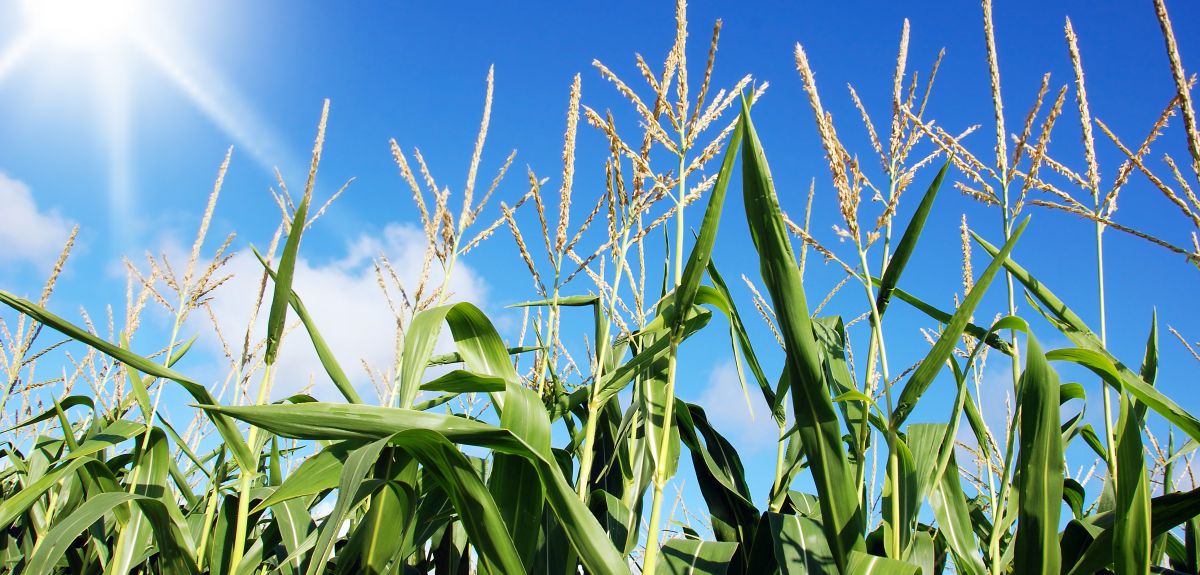
A-maize-ing double life of a genome
Early maize farmers selected for genes that improved the harvesting of sunlight, a new detailed study of how plants use 'doubles' of their genomes reveals. The findings could help current efforts to improve existing crop varieties.
Oxford University researchers captured a 'genetic snapshot' of maize as it existed 10 million years ago when the plant made a double of its genome – a 'whole genome duplication' event. They then traced how maize evolved to use these 'copied' genes to cope with the pressures of domestication, which began around 12,000 years ago. They discovered that these copied genes were vital to optimising photosynthesis in maize leaves and that early farmers selecting for them ‘fuelled’ the transformation of maize into a high-yield crop.
A report of the research is published this week in the journal Genome Research.
'Although whole genome duplication events are widespread in plants finding evidence of exactly how plants use this new 'toolbox' of copied genes is very difficult,' said Dr Steve Kelly of Oxford University's Department of Plant Sciences, lead author of the report. 'With crops like wheat it's not yet possible for us to unravel the 'before and after' of the associated genetic changes, but with maize we can chart how these gene copies were first acquired, then put to work, and finally 'whittled down' to create the modern maize plant farmed today.'
It is particularly useful for such genetic detective work that close relatives of maize did not duplicate their genomes 10 million years ago: those that retained a single copy went on to become the plant we now know as sorghum. This enabled the researchers to compare genetic data from these 'duplicated' and 'non-duplicated' descendants of ancient maize, something that is not yet possible with other duplicated crops like wheat.
In the wild plants have to overcome the challenges posed by pathogens and predators in order to survive. However, once domestication by humans began plants grown as crops had to cope with a new set of artificial selection pressures, such as delivering a high yield and greater stress tolerance.
'Whole genome duplication events are key in allowing plants to evolve new abilities,' said Dr Kelly. 'Understanding the complete trajectory of duplication and how copied genes can transform a plant is relevant for current efforts to increase the photosynthetic efficiency of crops, such as the C4 Rice Project. Our study is great evidence that optimising photosynthesis is really important for creating high-yield crops and shows how human selection has ‘sculpted’ copies of genes to create one of the world’s staple food sources.'
A full report of the research, entitled 'The impact of widespread regulatory neofunctionalization on homeolog gene evolution following whole genome duplication in maize', is published in the journal Genome Research. The work was supported by the Bill & Melinda Gates Foundation and The Leverhulme Trust.
 New study estimates NHS England spends 3% of its primary and secondary care budget on the health impacts of temperature
New study estimates NHS England spends 3% of its primary and secondary care budget on the health impacts of temperature
 International collaboration launches largest-ever therapeutics trial for patients hospitalised with dengue
International collaboration launches largest-ever therapeutics trial for patients hospitalised with dengue
 Oxford-built multi-agent assistant for cancer care to be piloted in collaboration with Microsoft
Oxford-built multi-agent assistant for cancer care to be piloted in collaboration with Microsoft
 World's first Phase II Nipah virus vaccine trial launch
World's first Phase II Nipah virus vaccine trial launch